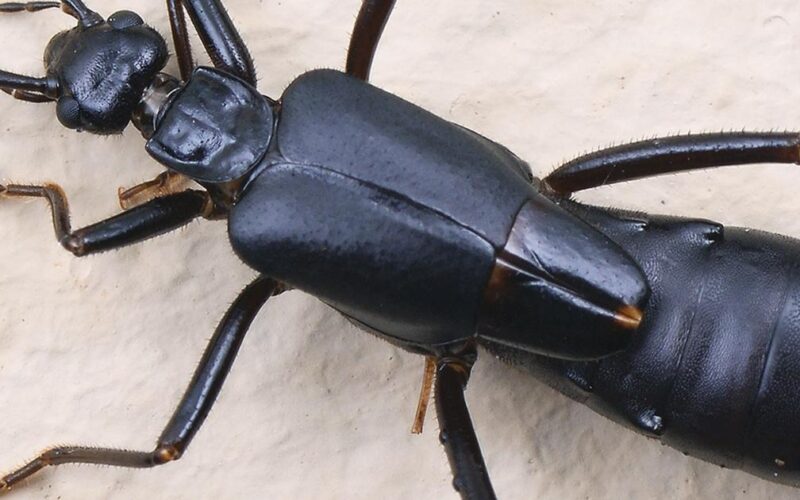When you think of garden companions, what comes to mind? Perhaps bees buzzing around or butterflies flitting from flower to flower. But lurking in the shadows, there’s another tiny creature that plays a surprisingly vital role: the earwig. These little insects, with their unique pincers and often misunderstood nature, are more than just creepy crawlies scuttling across your soil. They’re nature’s hidden helpers, working tirelessly behind the scenes.
Join us as we explore the fascinating world of earwigs—unraveling their physical features and behaviors while discovering how they contribute to our ecosystems. You may find that these small creatures deserve a place in your gardening heart!
Physical Features and Behavior of Earwigs
Earwigs are intriguing insects, easily recognized by their elongated bodies and distinctive pincers, known as cerci. These appendages can be quite intimidating but serve crucial purposes in mating rituals and defense.
Measuring about half an inch to one inch long, earwigs have a glossy brown or black exterior that allows them to blend seamlessly into their surroundings. Their wings are often hidden beneath protective forewings, which they rarely use for flight.
In terms of behavior, earwigs are mostly nocturnal. They prefer the cooler nighttime hours when they come out to search for food. Feeding primarily on decaying organic matter and soft plant material makes them excellent decomposers in the garden ecosystem.
These little creatures exhibit interesting social behaviors too. They often gather in small groups during the day under leaves or debris, demonstrating a level of community living that’s not commonly seen among other insects.
Role of Earwigs in the Ecosystem
Earwigs play a vital role in maintaining the balance of our ecosystems. These small insects are natural decomposers, feasting on decaying organic matter like fallen leaves and dead plants. This process helps recycle nutrients back into the soil, enriching it for future plant growth.
Additionally, earwigs act as pest controllers. They consume various garden pests such as aphids and mites, helping to keep their populations in check. This makes them valuable allies for gardeners who prefer to avoid chemical pesticides.
Their presence also supports the food web. Birds, amphibians, and other predators rely on earwigs as a source of nutrition. By sustaining these species, earwigs contribute to biodiversity within their habitats.
Understanding this intricate role highlights why preserving earwig populations is essential for ecological health. Their seemingly insignificant size belies their importance in promoting healthy gardens and balanced ecosystems alike.
Myths and Misconceptions about Earwigs
Many people believe that earwigs crawl into people’s ears, which is how they got their name. This is far from the truth. Earwigs prefer dark, damp environments and are more interested in decomposing organic matter.
Another common misconception is that these insects are harmful to humans. While they can have a frightening appearance with their pincers, earwigs are not aggressive and rarely bite unless provoked. They primarily feed on decaying material or plant matter rather than seeking out human interaction.
Some gardeners fear that earwigs will ravage their plants. In reality, they help control pest populations by consuming aphids and other garden nuisances. Understanding these facts can reshape your view of these misunderstood creatures.
Their role as scavengers makes them valuable for soil health too, aiding in decomposition processes essential for nutrient recycling in gardens.
How to Attract and Utilize Earwigs in Your Garden
To attract earwigs to your garden, start by creating a welcoming environment. They thrive in moist, dark places. Dampen some cardboard or newspaper and place it on the soil. This will provide a cozy hideout for them.
Another effective method is to set up shallow dishes filled with vegetable oil or beer. The scent lures them in, making it an easy way to observe their presence while keeping any harmful pests at bay.
Planting flowers like marigolds can also encourage earwig populations. These plants attract beneficial insects that coexist well with earwigs.
Once you have attracted these little helpers, allow them to do their job. Earwigs feed on decaying organic matter and small pests such as aphids and mites, helping maintain balance in your garden ecosystem without harsh chemicals.
Benefits of Having Earwigs in Your Garden
Earwigs may not be the most glamorous visitors to your garden, but they bring several benefits that can help your plants thrive. These little creatures are excellent natural pest controllers. They feast on aphids, spider mites, and other unwanted insects that could harm your flowers and vegetables.
They also contribute to soil health. As they munch on decaying plant material, earwigs break it down into nutrients that enrich the soil. This process promotes healthier growth for your plants.
Additionally, earwigs have a unique behavior of burrowing into the soil at night. This aerates the ground and helps improve water drainage—essential for root development.
The presence of these critters indicates a balanced ecosystem in your garden. When you see them around, it’s often a sign that nature is doing its job by maintaining harmony in plant life.
Tips for Dealing with an Overpopulation of Earwigs
If you find yourself facing an earwig overpopulation, don’t panic. There are various natural methods to manage their numbers effectively.
Keep your garden tidy. Remove debris like leaves and wooden materials, as these provide perfect hiding spots for earwigs. Regularly mowing your lawn also disrupts their habitat.
Consider using traps to catch them. A simple trap can be made by filling a shallow container with oil or soapy water and placing it in the ground. Earwigs will be drawn to it and won’t escape.
Attract beneficial insects that prey on earwigs. Ladybugs and certain predatory wasps can help maintain balance in your garden ecosystem.
If they invade indoor spaces, seal gaps around windows and doors to prevent entry. Keep food stored properly; this reduces attracting them inside while maintaining a clean environment contributes significantly as well.
Conclusion
Earwigs often evoke a sense of fear and misunderstanding, but the truth is far more fascinating. These small insects play essential roles in our gardens and ecosystems. Their physical features are unique, with distinct pincers that often lead to misconceptions about their nature.
Understanding earwigs reveals their importance as natural gardeners. They thrive on organic matter and help control pest populations, making them allies in maintaining healthy plant life. By attracting earwigs into your garden with simple strategies, you can harness their benefits while ensuring they remain a positive presence.
While some may worry about overpopulation, there are Earwig effective ways to manage these industrious creatures without resorting to harsh measures. Embracing the presence of earwigs can enhance your gardening experience and contribute positively to the environment.
The next time you spot an earwig scuttling along your garden bed or patio, take a moment to appreciate this remarkable little helper that contributes so much more than meets the eye.




